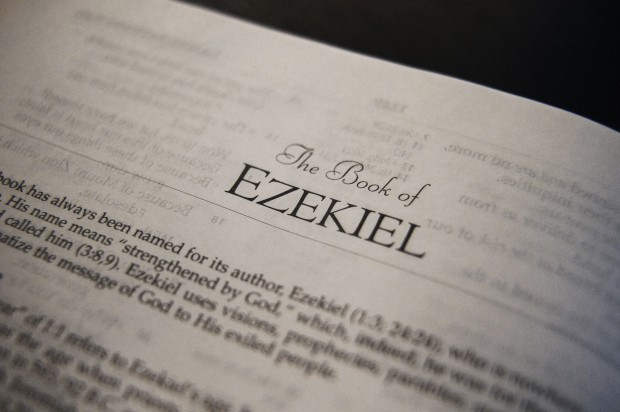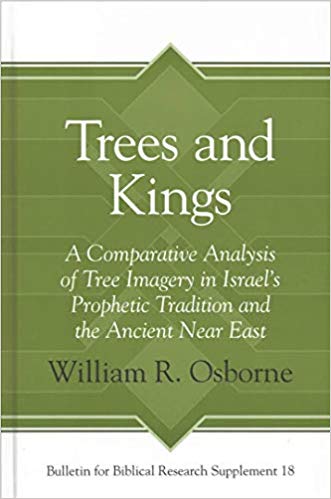
I am truly and deeply blessed and grateful for all of the feedback for Judgment Of The Nephilim. It has been 9 months since the publishing of the book and it has 161 reviews on Amazon and 93 ratings on Goodreads. Thanks to all of you who have read and provided your thoughts and opinions on the book! While I am overjoyed by the many, many positive reviews, I am also grateful for some of the more critical ones – especially one that is quite substantive in its points of disagreement with the book. Here is one great example from a 3-Star review on Amazon:
“Overall, a good effort at explaining who the Nephilim were and their angelic/human origin. The book is well-organized and well-written. However, a few of the author’s ideas were quite flawed. One of them is that the Sons of God of Genesis 6 descended to the Jordan River instead of Mt. Hermon. While there is some evidence angels interacted with humans near rivers, the majority of the evidence supports a mountaintop descent as explained in Michael Heiser’s The Unseen Realm. Some other evidence to support this would be allusions to mountains in Scripture, i.e. Satan on the “holy mountain of God”/Eden in Ezekiel 28 as well as the giving of the law on Mt. Sinai (with angles as intercessors) and the building of the Temple on Mt. Zion (a structure with many similarities to Eden.)
This also explains why idolatry was carried out near “high places” and not near rivers and why heathen nations built their pagan shrines on hills/mountains, to interact with their “gods.” Another of the book’s flaws is the interpretation given of Ezekiel 31 and 32. The author makes a valiant attempt to prove that “The Assyrian” of Ezekiel 31 is the lead angel of the Genesis 6 incursion, trying to portray these 2 chapters in a similar allegorical light as Ezekiel 28. The case made is weak and in my opinion, taken out of context. Ezekiel 29-32 is clearly speaking about the imminent destruction of Pharaoh and Egypt by Nebuchadnezzar’s army, an event which is likely to be repeated in some form in the Last Days. Allusions to arrogance and water apply not to the flood of Genesis but to Egypt’s reliance upon the Nile, a theme repeated numerous times in Scripture.
Also those slain in Ezekiel 31 are not done so by water, but by the sword, their carcasses left to be picked clean by the fowls of heaven and the beasts of the earth (who once lodged in or under Egypt’s branches.) I would also add that trees are a metaphor used of nations, not angels, and the author even contradicts himself by trying to compare Ezekiel 31 to Daniel 4 where Nebuchadnezzar and Babylon are described as a tree and with similar language. The Nephilim may have been as tall as the cedars of Lebanon, but the cedar metaphor can’t be consistently applied to anything other than mere height/pride. And the idea that the angels are in Sheol is obviously false as Sheol is the abode of the dead, a place entirely distinct from Tartarus (2 Peter 2:4, Jude 6.) Overall, a good book, well worth reading and with excellent scholarship if you overlook the weak explanations of Chapter 5 and the schizophrenic arguments of Chapters 10 & 11.”
Now one of the departures Judgment Of The Nephilim takes from the more common interpretations of the Genesis 6 account is precisely where the Genesis 6 apostate angels descended on Earth. Many authors and speakers on the Nephilim adhere to the Mt. Hermon being the “landing spot” for the rebel Sons of God when they invaded the human realm to take human wives. This is based on the apocryphal Book of Enoch which states this explicitly:
“And they were in all two hundred; who descended ⌈in the days⌉ of Jared on the summit of Mount Hermon, and they called it Mount Hermon, because they had sworn and bound themselves by mutual imprecations upon it.” – Book of 1 Enoch 6:6
Does the Bible also state this? Not at all. There is nothing in Scripture that indicates any angels descending upon Mt. Hermon, taking an oath or gathering there. Mt. Hermon is not that significant in Scripture at all. However, there is a location that is extremely significant in Scripture and directly relates to the Nephilim and even a supernatural portal to Heaven – the Jordan River. Here are just a few examples of this river’s significance:
- The Jordan River was the entryway into the Promised Land for The Israelites.
- The Nephilim Kings Og and Sihon both established their kingdoms on the eastern shore of the Jordan.
- Like the Red Sea, the Jordan River supernaturally parted for Joshua to lead the Israelites into the Promised Land.
- The prophet Elijah was supernaturally fed by ravens at the Jordan river. (1 Kings 17:1-6).
- Angels and chariots of fire descended and took Elijah to Heaven at the Jordan river. (2 Kings 2:1-14).
And the most famous event that took place at the Jordan river in Scripture was the baptism of The Lord Jesus Christ:
“Then cometh Jesus from Galilee to Jordan unto John, to be baptized of him. But John forbad him, saying, I have need to be baptized of thee, and comest thou to me? And Jesus answering said unto him, Suffer it to be so now: for thus it becometh us to fulfil all righteousness. Then he suffered him. And Jesus, when he was baptized, went up straightway out of the water: and, lo, the heavens were opened unto him, and he saw the Spirit of God descending like a dove, and lighting upon him: And lo a voice from heaven, saying, This is my beloved Son, in whom I am well pleased.” – Matthew 3:13–17
Jesus Christ, God in the flesh, chose to be baptized in the Jordan River. And the skies opened to reveal a heavenly portal and the Holy Spirit descended on Him in the same divinely appointed location of the Jordan River. Immediately after this, God the Father spoke from Heaven to Earth for all to hear proclaiming that Jesus Christ was the Son of God. The pathway from Earth to the divine realm was on display at this mystical river. And there are many more examples of the amazing connections to rivers and the divine in Judgment Of The Nephilim.
Ezekiel 31 – Kings And Trees

Judgment Of The Nephilim details the rise and fall of the Assyrian, the fallen angelic ruler of the antediluvian fallen angelic-Nephilim kingdom. It is detailed in Ezekiel 31. In very illustrative, symbolic language, the prophet details the rise and destruction of this kingdom by the flood. A big part of the language is the comparison of the Assyrian and the other angels on Earth as “trees”:
“Behold, the Assyrian was a cedar in Lebanon with fair branches, and with a shadowing shroud, and of an high stature; and his top was among the thick boughs.” – Ezekiel 31:1–3
This interpretation is critical to rightly dividing Ezekiel 31 and 32 and their direct reference to the Genesis 6 account. The reviewer above felt this interpretation was flawed on its face. However, Dr. Michael Heiser actually supported this endorsement. On his podcast, The Naked Bible, Dr. Heiser interviewed William “Rusty” Osborne, author of Trees and Kings: A Comparative Analysis of Tree Imagery in Israel’s Prophetic Tradition and the Ancient Near East, which explores this exact metaphor in Scripture. In the episode Osborne mentions Ezekiel 31 and Dr. Heiser concurs that it has direct “Divine Council” references. So there is no disagreement between this author, Osborne and Dr. Heiser that fallen angels are in view in Ezekiel 31. You can find a link to the episode here.
Best book I’ve ever read that helped me understand the Old Testament. I always gave up reading the Old Testament.Ryan made it so easy to understand. Fabulous book, well done. All Scriptures were there for research. Very glad I read this book. Now as I read the Old Testament it’s very clear.
Totally agree! Excellent work.
Dear Ryan: I have been following Dr. Tom Horn’s ministry, L.A. Marzulli, and others on the giants and the fallen angels, but you have added several new levels of my understanding. THANK YOU. PRAISE GOD FOR YOU!
I can’t put this book down. From the morning I wake up to sundown I am glued to this book! I highly recommend this book to anyone who wants to learn more about ancient history concerning the Nephilim. Great job! Looking forward to reading more of your books. I currently own an ebook but will be purchasing the paperback too!
I wouldn’t give any credibility to what Heiser says or thinks anyways. Totally apostate and anti-biblical views.
If you don’t back up your statements with scriptures or examples in Michael Heiser’s writings, you can’t expect me or others to accept your assertions.
Just saying.
Bonnie,
Did you get to read the book yet?